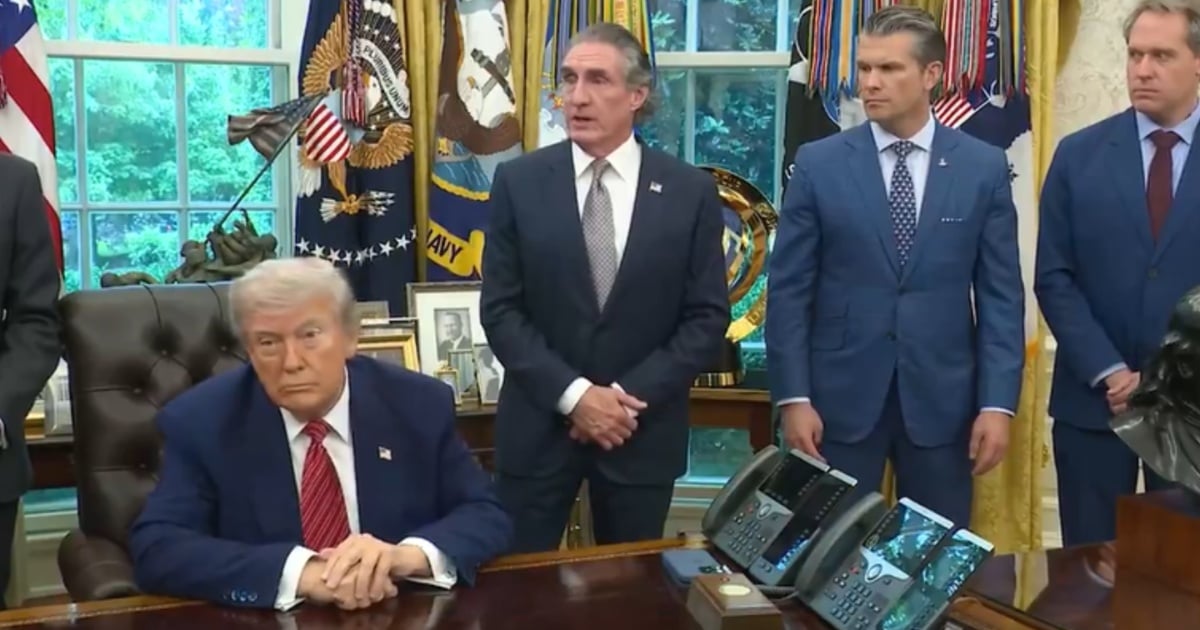The President of the United States Donald Trump signed a series of executive orders on Friday aimed at fostering a “nuclear energy revival” through the construction of new reactors that, he stated, will meet the electricity demands of data centers for artificial intelligence and other emerging industries.
Trump signed four orders aimed at accelerating the approval of nuclear reactors for defense and AI purposes, reforming the Nuclear Regulatory Commission with the goal of quadrupling electricity production over the next 25 years, renewing the regulatory process to have three experimental reactors operational by July 4, 2026, and promoting investment in the technology industrial base.
“Mark this day on your calendar. This is going to turn back the clock on over 50 years of overregulation in an industry,” said Interior Secretary, Doug Burgum, at a event in the Oval Office where the leader signed the orders.
The orders would reorganize the independent Nuclear Regulatory Commission (NRC) to ensure faster reviews of nuclear projects, including a deadline of 18 months for the NRC to act on industry applications.
The measures also establish a pilot program to bring online three new experimental reactors by July 4, 2026, and invoke the Defense Production Act to allow for emergency measures to ensure that the U.S. has enough uranium and other components for reactors.
The U.S. Secretary of Energy is also granted the authority to approve certain advanced reactor designs and projects, removing authority from the independent safety agency that has regulated the U.S. nuclear industry for five decades.
“President Trump here today has committed to energy dominance, and part of that energy dominance is that we have enough electricity to win the artificial intelligence race against China. What we do in the next five years related to electricity will determine the next 50, because this is the first time in history that electricity can be translated into intelligence,” asserted Burgum.
The orders represent the president’s latest foray into the underlying policy of the electric supply in the United States. On his first day in office, the president declared a national energy emergency and pledged to reverse a ban implemented by Joe Biden on the export of natural gas and to expand oil and gas drilling in Alaska.
Nuclear energy does not produce carbon emissions from oil and gas, but it generates radioactive waste, an issue that has raised concerns among environmental groups.
The United States has 93 commercial nuclear reactors in operation, spread across 54 nuclear plants located in 28 states of the country.
Nuclear energy accounts for approximately 18 to 20% of the total electricity generated in the country.
Although the percentage has slightly decreased in recent years due to the rise of natural gas and renewable energy sources, nuclear power remains the largest source of carbon-free energy in the U.S., surpassing hydropower, solar, and wind energy individually.
Frequently Asked Questions about the Expansion of Nuclear Energy in the U.S.
The main objective of the executive orders signed by Trump is to accelerate the expansion of nuclear energy in the United States through the construction of new reactors. These reactors are intended to meet the electricity demands of emerging industries such as artificial intelligence.
Trump plans to reform the NRC to ensure faster reviews of nuclear projects, setting a deadline of 18 months for the NRC to act on industry applications. This aims to quadruple electricity production in the next 25 years.
Trump’s executive orders invoke the Defense Production Act to allow emergency measures ensuring that the U.S. has sufficient uranium and other components necessary for nuclear reactors. This is part of the effort to secure the country’s energy dominance.
Nuclear energy does not emit carbon, but it produces radioactive waste, which poses a significant environmental risk. This waste has been a concern for environmental groups, given its potential environmental impact and the challenges in its safe management.
